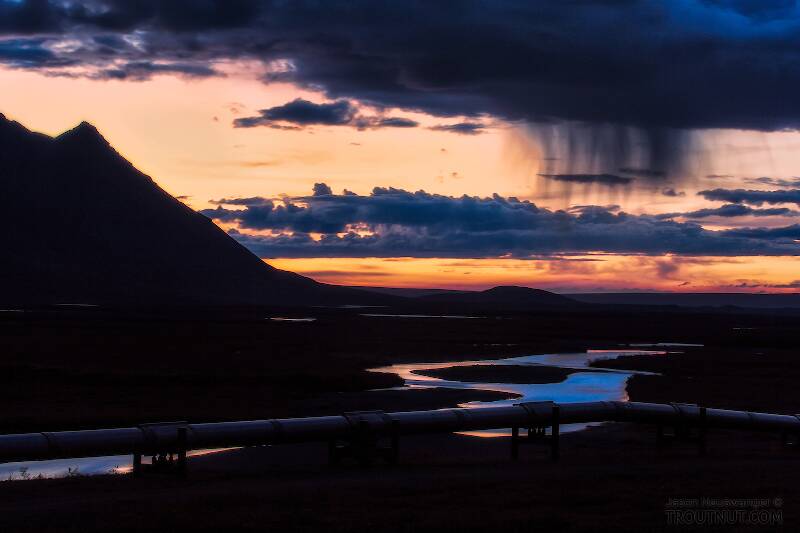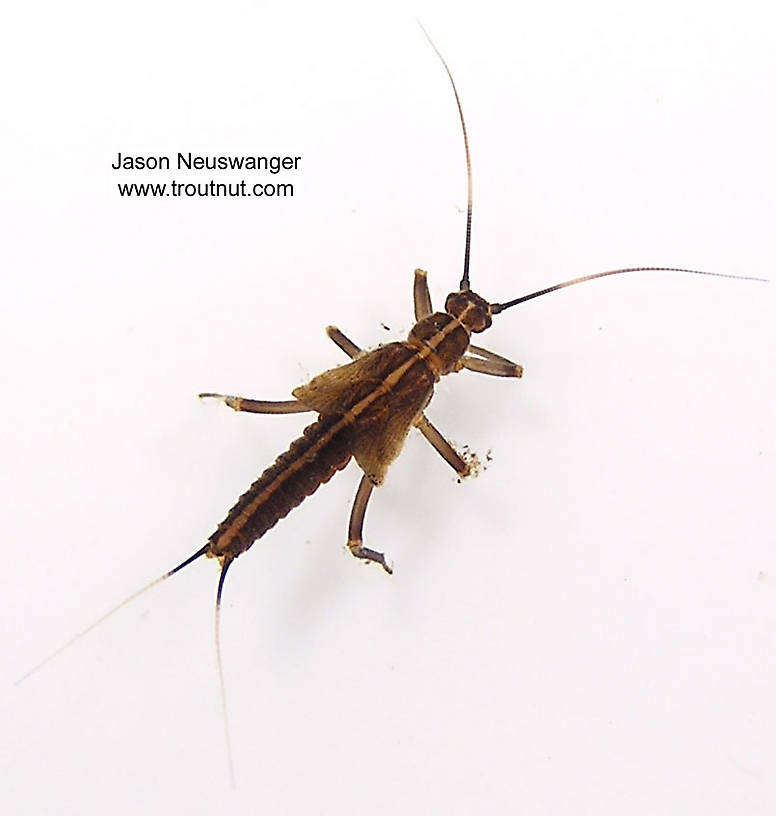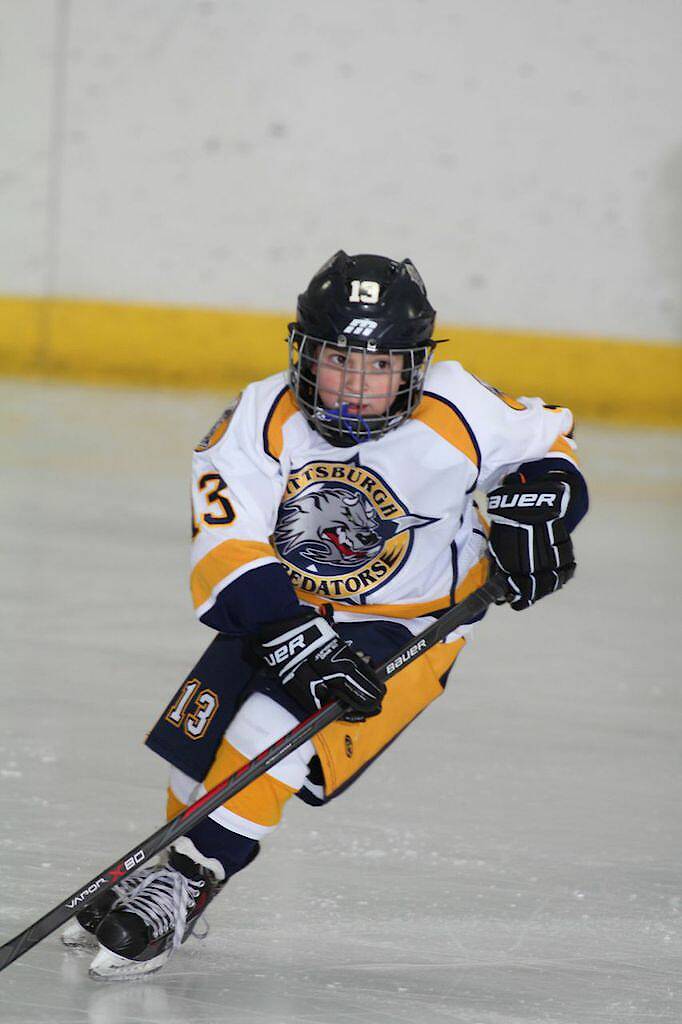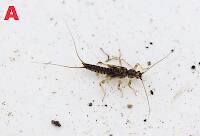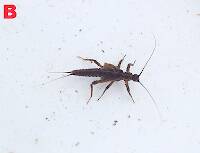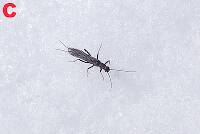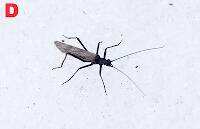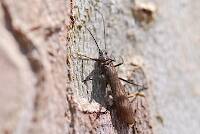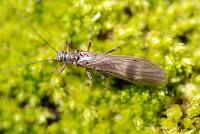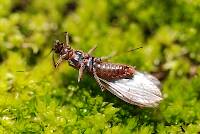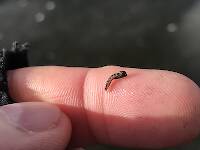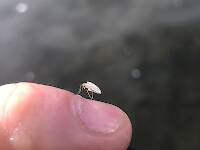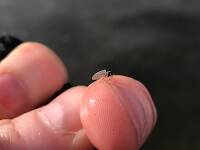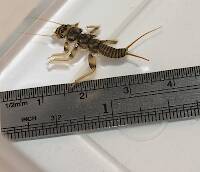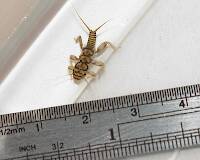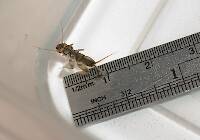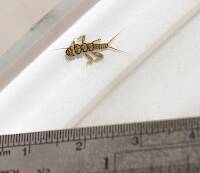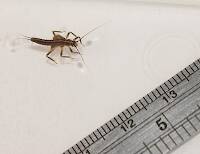
Hex Mayflies
Hexagenia limbata
The famous nocturnal Hex hatch of the Midwest (and a few other lucky locations) stirs to the surface mythically large brown trout that only touch streamers for the rest of the year.
Featured on the forum

This one seems to tentatively key to Holocentropus, although I can't make out the anal spines in Couplet 7 of the Key to Genera of Polycentropodidae Larvae nor the dark bands in Couplet 4 of the Key to Genera of Polycentropodidae Larvae, making me wonder if I went wrong somewhere in keying it out. I don't see where that could have happened, though. It might also be that it's a very immature larva and doesn't possess all the identifying characteristics in the key yet. If Holocentropus is correct, then Holocentropus flavus and Holocentropus interruptus are the two likely possibilities based on range, but I was not able to find a description of their larvae.

Troutnut is a project started in 2003 by salmonid ecologist Jason "Troutnut" Neuswanger to help anglers and
fly tyers unabashedly embrace the entomological side of the sport. Learn more about Troutnut or
support the project for an enhanced experience here.
Ljnbass on Jan 13, 2010January 13th, 2010, 1:49 am EST
Hello,
Just found this web site and have to say this is the most informative and detailed one I've found.
I live in PA and fish the Little Juniata. I never seem to hit the early black stoneflies. When is the best time for them? And after looking at these photos I believe my pattern ain't what it should be. I know these photos are from a sample out west but are they similar to our eastern blacks?
Just found this web site and have to say this is the most informative and detailed one I've found.
I live in PA and fish the Little Juniata. I never seem to hit the early black stoneflies. When is the best time for them? And after looking at these photos I believe my pattern ain't what it should be. I know these photos are from a sample out west but are they similar to our eastern blacks?
Taxon on Jan 13, 2010January 13th, 2010, 8:32 am EST
Ljnbass-
PA has the following species of family Taeniopterygidae:
Bolotoperla rossi (Smoky Willowfly)
Oemopteryx contorta (Dark Willowfly)
Strophopteryx appalachia (Appalachian Willowfly)
Strophopteryx fasciata (Mottled Willowfly)
Taenionema atlanticum (Atlantic Willowfly)
Taeniopteryx burksi (Eastern Willowfly)
Taeniopteryx maura (Spinyleg Willowfly)
Taeniopteryx metequi (Shortwing Willowfly)
Taeniopteryx nivalis (Boreal Willowfly)
Taeniopteryx parvula (Hooked Willowfly)
Taeniopteryx ugola (Cumberland Willowfly)
Don't know which of them are present in the Little Juniata, but would expect all of them to be quite similar in profile and size.
PA has the following species of family Taeniopterygidae:
Bolotoperla rossi (Smoky Willowfly)
Oemopteryx contorta (Dark Willowfly)
Strophopteryx appalachia (Appalachian Willowfly)
Strophopteryx fasciata (Mottled Willowfly)
Taenionema atlanticum (Atlantic Willowfly)
Taeniopteryx burksi (Eastern Willowfly)
Taeniopteryx maura (Spinyleg Willowfly)
Taeniopteryx metequi (Shortwing Willowfly)
Taeniopteryx nivalis (Boreal Willowfly)
Taeniopteryx parvula (Hooked Willowfly)
Taeniopteryx ugola (Cumberland Willowfly)
Don't know which of them are present in the Little Juniata, but would expect all of them to be quite similar in profile and size.
Jmd123 on Jan 13, 2010January 13th, 2010, 5:24 pm EST
This genus comes out heavy on the Huron River (Ann Arbor, MI) in March. Now if I could just get the smallies to pay attention to 'em...
Jonathon
Jonathon
No matter how big the one you just caught is, there's always a bigger one out there somewhere...
Wbranch on Jan 17, 2010January 17th, 2010, 2:31 am EST
Ljnbass,
It's possible that the Early Black Stone is not present on the LJ. There are a number of avid, and some zealous, LJ fishers who frequent this web site who should be able to respond to your inquiry.
On the rivers I fish in NYS I often see them on pleasant, sunny, days in March. Typically I see them emerging before any of the mayflies on those rivers.
It's possible that the Early Black Stone is not present on the LJ. There are a number of avid, and some zealous, LJ fishers who frequent this web site who should be able to respond to your inquiry.
On the rivers I fish in NYS I often see them on pleasant, sunny, days in March. Typically I see them emerging before any of the mayflies on those rivers.
Catskill fly fisher for fifty-five years.
JAD on Jan 17, 2010January 17th, 2010, 9:08 am EST
Hi all
I think their are very few streams without the early blacks. I have seen them on the snow in February and on the water when the weather was quite pleasant in late April into early May. I realize that is a broad statement, but even some of the streams that are polluted with sewage in Erie have Early Blacks .
Best
JAD
I think their are very few streams without the early blacks. I have seen them on the snow in February and on the water when the weather was quite pleasant in late April into early May. I realize that is a broad statement, but even some of the streams that are polluted with sewage in Erie have Early Blacks .
Best
JAD
They fasten red (crimson red) wool around a hook, and fix onto the wool two feathers which grow under a cock’s wattles, and which in colour are like wax.
Radcliffe's Fishing from the Earliest Times,
Softhackle on Jan 17, 2010January 17th, 2010, 2:36 pm EST
Hi,
I'm not sure about other fishermen, here, but we get decent hatches in March as well. For the most part, the fish don't seem interested in them. It may be because the water is still too cold and the metabolism of the fish is still running low OR it could be because they often hatch in high fast water that is muddy or off color. The fish COULD be feeding on them underwater, but I've had no luck on my imitation of them during these times.
The only time I've had any luck on them is when, for some reason, the water is running lower than normal and temperatures-both outside and in the water are running somewhat higher than normal. Then the fish have a great feast.
I've posted my pattern before, but I'll repost it for you.
http://www.troutnut.com/libstudio/FS&S/html/black_stone_flymph.html
If you fish during the hatches, let us know how you do.
Mark
I'm not sure about other fishermen, here, but we get decent hatches in March as well. For the most part, the fish don't seem interested in them. It may be because the water is still too cold and the metabolism of the fish is still running low OR it could be because they often hatch in high fast water that is muddy or off color. The fish COULD be feeding on them underwater, but I've had no luck on my imitation of them during these times.
The only time I've had any luck on them is when, for some reason, the water is running lower than normal and temperatures-both outside and in the water are running somewhat higher than normal. Then the fish have a great feast.
I've posted my pattern before, but I'll repost it for you.
http://www.troutnut.com/libstudio/FS&S/html/black_stone_flymph.html
If you fish during the hatches, let us know how you do.
Mark
"I have the highest respect for the skilled wet-fly fisherman, as he has mastered an art of very great difficulty." Edward R. Hewitt
Flymphs, Soft-hackles and Spiders: http://www.troutnut.com/libstudio/FS&S/index.html
Flymphs, Soft-hackles and Spiders: http://www.troutnut.com/libstudio/FS&S/index.html
Gutcutter on Jan 18, 2010January 18th, 2010, 5:44 am EST
the little j has 'em. rarely get the fish up in any numbers. they are #16/18 and hatch any time there is decent weather jan-march. in my experience, the trout take more midges during the e.b.s."hatch" and flinging a 16 black stonefly or cdc caddis (close enough)above a 26 midge emerger works well so you can locate the emerger faster.
i have missed a few fish that hit the big fly as i was so concentrated on and fixated on the micro emerger!
i have missed a few fish that hit the big fly as i was so concentrated on and fixated on the micro emerger!
All men who fish may in turn be divided into two parts: those who fish for trout and those who don't. Trout fishermen are a race apart: they are a dedicated crew- indolent, improvident, and quietly mad.
-Robert Traver, Trout Madness
-Robert Traver, Trout Madness
Ljnbass on Jan 19, 2010January 19th, 2010, 12:31 pm EST
Softhackle,
I like the pattern you posted. I'm going to try it but I think I'm going to try mixing a little amber in with the black for the thorax. After looking at some of the photos on this site I noticed they have a little amber in them. My patterns were made all black and had very little luck with them. Thanks for the post and awesome site!
Lou
I like the pattern you posted. I'm going to try it but I think I'm going to try mixing a little amber in with the black for the thorax. After looking at some of the photos on this site I noticed they have a little amber in them. My patterns were made all black and had very little luck with them. Thanks for the post and awesome site!
Lou
Softhackle on Jan 19, 2010January 19th, 2010, 1:19 pm EST
Absolutely. Patterns are made to be adjusted to where you fish. I've been thinking of adding a little brown to mine. I've noticed that some that hatch here, have more of a brownish tinge to them, but they are very dark, and often appear black.
What I like about this pattern is I have fished it like a nymph, drawing it slowly to the shallows and in the surface after treating the fly with a flotant, and it worked both ways.
Mark
What I like about this pattern is I have fished it like a nymph, drawing it slowly to the shallows and in the surface after treating the fly with a flotant, and it worked both ways.
Mark
"I have the highest respect for the skilled wet-fly fisherman, as he has mastered an art of very great difficulty." Edward R. Hewitt
Flymphs, Soft-hackles and Spiders: http://www.troutnut.com/libstudio/FS&S/index.html
Flymphs, Soft-hackles and Spiders: http://www.troutnut.com/libstudio/FS&S/index.html
Quick Reply
Related Discussions
Topic
Replies
Last Reply
4
Mar 16, 2010
by Wiflyfisher
by Wiflyfisher

